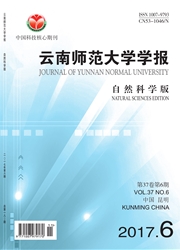

 中文摘要:
中文摘要:
通过PCR扩增了澜沧江流域景洪段鲃亚科(Barbinae)短吻鱼(Sikukia gudgeri)、黄尾短吻鱼(S.flavicaudata)、中国结鱼(Tor sinensis)、云南四须鲃(Barbodes huangchuchieni)和长臀鲃(Mystacoleucus marginatus)共5种鱼的线粒体12S rDNA和16S rDNA部分片段,并进行了序列测定,基于12S rDNA和16S rDNA重建NJ系统发育树,结果表明:中国结鱼与野鲮亚科(Labeoninae)亲缘关系较近;云南四须鲃与短吻鱼和黄尾短吻鱼有较近的亲缘关系,长臀鲃次之.基于12S rDNA和16S rDNA序列的遗传学特征佐证了鲃亚科不是一个单系群,四须鲃属(Barbodes)为鲃亚科鱼类进化最原始的属这一观点有待商榷.
 英文摘要:
英文摘要:
Partial of 12 S rDNA and 16 S rDNA sequences of 5 species cyprinid fishes that belong subfamily Barbinae were amplified using PCR techniques and the sequences were analyzed in the present study.Fishes of Barbinae,including Sikukia gudgeri,S.flavicaudata,Tor sinensis,Barbodes huangchuchieni and Mystacoleucus marginatus were collected from Jing Hong basin of Lancang River,Yunnan province.Based on the reconstructed neighbor-joining (NJ) tree,phylogenetic status of five species fishes were assessed.The results indicated that T.sinensis was genetically more relative to Labeoninae than Subfamily Barbinae.B.huangchuchieni is genetically more relative to S.gudgeri and S.flavicaudatathan M.marginatus.According to the genetic characteristics of 12 S rDNA and 16 S rDNA sequences,subfamily Barbinae is not proved as a monophyletic population.And the point of view that Barbodes is the most ancestral genus in Barbinae that will be needed still assessed.
 同期刊论文项目
同期刊论文项目
 同项目期刊论文
同项目期刊论文
 期刊信息
期刊信息
